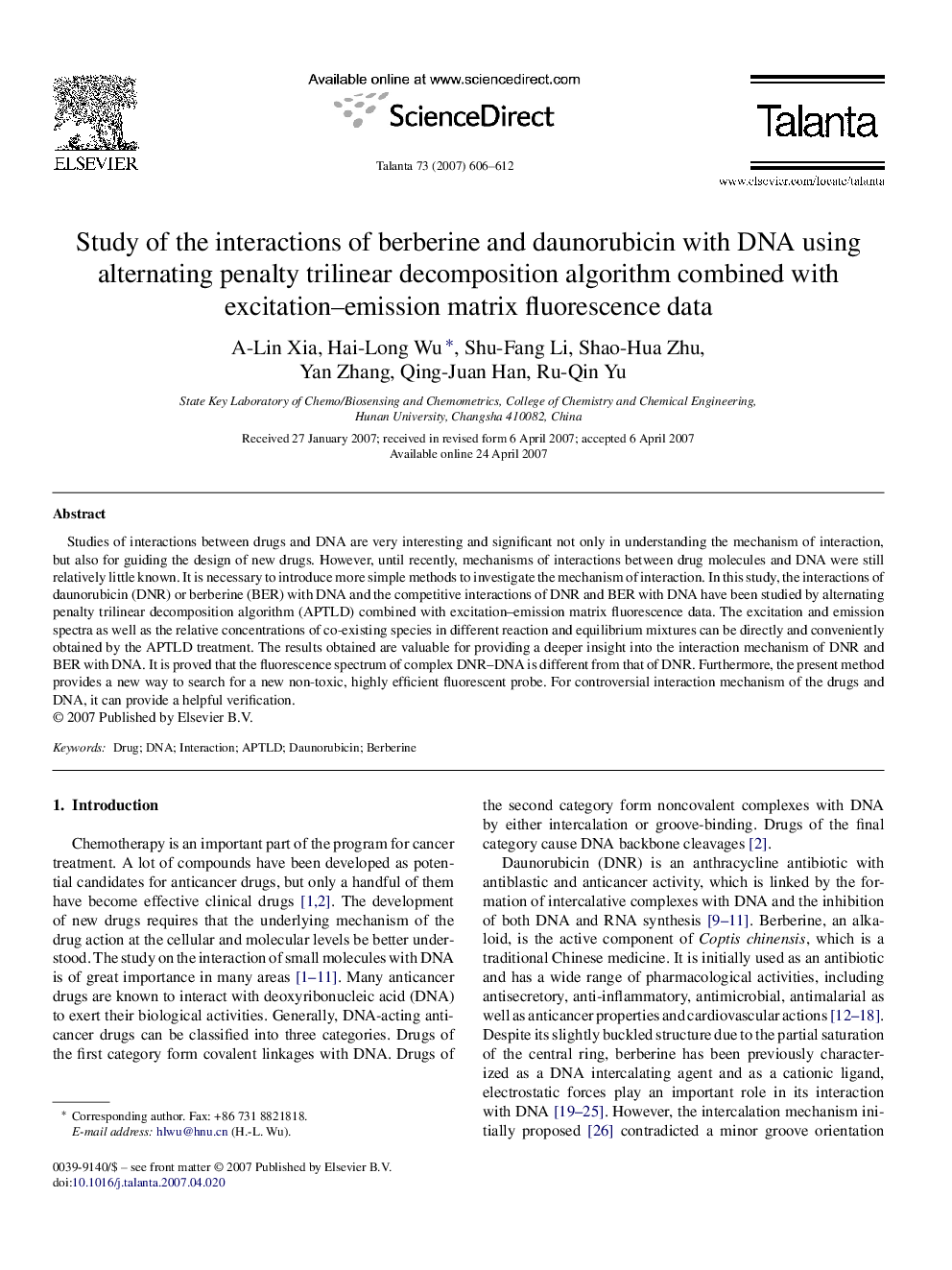| Article ID | Journal | Published Year | Pages | File Type |
|---|---|---|---|---|
| 1247168 | Talanta | 2007 | 7 Pages |
Studies of interactions between drugs and DNA are very interesting and significant not only in understanding the mechanism of interaction, but also for guiding the design of new drugs. However, until recently, mechanisms of interactions between drug molecules and DNA were still relatively little known. It is necessary to introduce more simple methods to investigate the mechanism of interaction. In this study, the interactions of daunorubicin (DNR) or berberine (BER) with DNA and the competitive interactions of DNR and BER with DNA have been studied by alternating penalty trilinear decomposition algorithm (APTLD) combined with excitation–emission matrix fluorescence data. The excitation and emission spectra as well as the relative concentrations of co-existing species in different reaction and equilibrium mixtures can be directly and conveniently obtained by the APTLD treatment. The results obtained are valuable for providing a deeper insight into the interaction mechanism of DNR and BER with DNA. It is proved that the fluorescence spectrum of complex DNR–DNA is different from that of DNR. Furthermore, the present method provides a new way to search for a new non-toxic, highly efficient fluorescent probe. For controversial interaction mechanism of the drugs and DNA, it can provide a helpful verification.
